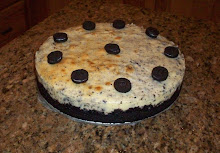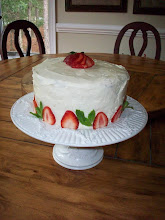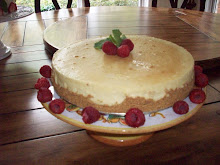Note from Megan: My brother and I grew up in a family that loves to cook and try out new recipes. Tommy cooks more often than I, and has been quite the entertainer and experimenter lately so I have invited him to be a guest poster and add some additional content and commentary whenever he pleases. This is his first post, but we at la belle patisserie hope he shares his kitchen triumphs with us again!
In my last year of law school I've had several people over for dinner, with the idea that now is the time to live it up, and maybe that these dinners will some day encourage future visits to Dallas by my friends once we all leave C-ville. With these dinners I'm much more of a tinkerer with various protein entrees--fish, poultry, etc.--but in order to provide a complete experience and encourage my friends to help my roommate and I finish off the wine & beer we collect, I have been working with desserts now, too.
Aside from bananas foster (which involves a cheap, low key caramel), this was my first attempt at caramelizing sugar. There were a few technical missteps at the
beginning due to my unfamiliarity with my stove, but the result was just darker caramel, which I think results in a more bitter flavor. Ultimately, the key points I deduced from caramelizing are: (1) only stir the sugar/water suspension until it becomes a solution. Be as precise as possible. (2) Once you get close to the color you want for your caramel, watch very carefully. The solution heats unevenly, and gold turns to brown very quickly. Of course, if you hit brown, this is no problem for flan, as the recipe suggests a slightly bitter caramel is offset by the sweetness of the creme, so all is good.
You can find the recipe here.
All in all, it turned out to be pretty good. We all enjoyed the food and had some great conversation.The Meal
As for the rest of the meal, we had some bacon wrapped sea scallops, served with rice and toasted almonds and sauteed asparagus. Throughout the meal we enjoyed three varieties of white wine: Gallo Pinot Gris, Nobilo Savignon Blanc, and Martin Codar Albarino (all 2007). All were spectacular. A tip for bacon wrapped scallops - two toothpicks per scallop is better than one--the second pick will help tremendously in both preparation and while cooking. Just don't forget to remove them before you serve them.FN1: While I didn't buy the vanilla beans, I almost did because of the time of year. I recently saw a food network recipe that involved using vanilla beans for mulled wine. After warming sugar and water, they added wine, a few sliced vanilla beans, plus a bouquet garni of cardamom pods (~5), cloves(~5), and two sticks of cinnamon. Mulled wine - why not?








1 comment:
Our fundamentals instructor LOVES sea salt. She has us use it in every recipe!
Post a Comment